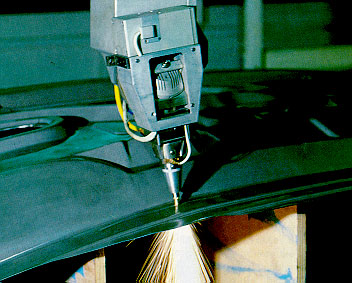|
laser beam 절단
|
(1)
Laser cutting offers a high precision, CNC controlled method of cutting plastic, metallic
and thin ceramic components. It is a mechanised, thermal, non-contact process capable of
cutting most materials with a high degree of precision and accuracy.
There are two commonly used types of industrial cutting laser, CO2 and Nd:YAG.
These differ in that the wavelength of infrared light produced is 10.6μm for CO2 lasers
and 1.06μm for Nd:YAG lasers. Both these types of lasers produce the cut by focusing
a beam of monochromatic light to a very small spot size by lenses and mirrors giving
power densities in the up to 105 W/mm2. This power density is sufficient to melt locally
or even vaporise most materials. Once a through thickness zone of molten or vaporised material
is generated (a keyhole), a jet of assist gas, delivered co-axially through the cutting nozzle,
is used to eject this material from the kerf. |
|
The nozzle is used to constrict and direct the assist gas to produce a columnar flow.
The flow of gas serves to push the molten metal through the kerf. |
|
A groove, slit, or notch made by a cutting tool, such as a laser cutter or the width of a groove made by a laser cutting tool. The kerf is dependent upon the properties of the material being cut, the workpiece thickness, the lens focal length, and finally, the type of cutting gas used in the laser. |